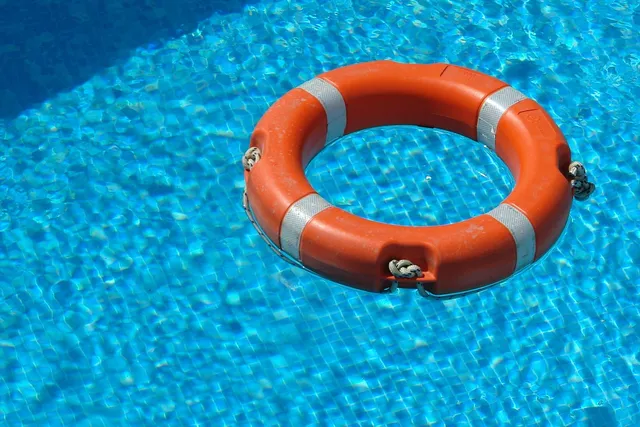In this blog post, we will be discussing the tragic story of Beau Burns, a young boy who lost his life in a drowning accident. The purpose of this article is to remember Beau and his story, and to highlight the importance of water safety awareness. By examining the lessons that can be learned from Beau’s drowning, we can work towards preventing future tragedies and promoting a culture of water safety.
Remembering Beau Burns: A Tragic Loss That Can Inspire Change
Beau Burns was a vibrant and energetic 8-year-old boy who loved spending time outdoors, especially near bodies of water. Tragically, his life was cut short when he drowned during a family outing at a local lake. The impact of Beau’s death on his family and community was devastating. His parents, siblings, and friends were left heartbroken and grappling with the immense loss.
However, even in the midst of their grief, Beau’s family found strength in their desire to prevent similar tragedies from happening to other families. They realized that Beau’s story could serve as a powerful catalyst for change and water safety awareness. By sharing their experience and advocating for better education and regulations, they hoped to honor Beau’s memory and prevent future drownings.
The Importance of Water Safety: Lessons from Beau Burns’ Drowning

Drowning is a leading cause of accidental death worldwide, with thousands of lives lost each year. In fact, according to the World Health Organization (WHO), drowning claims the lives of over 360,000 people annually. These statistics highlight the urgent need for water safety awareness and education.
Beau Burns’ drowning serves as a tragic reminder of the importance of water safety. It teaches us several valuable lessons. Firstly, it emphasizes the need for constant supervision when children are near bodies of water. Even a momentary lapse in attention can have devastating consequences.
Secondly, Beau’s story highlights the importance of knowing how to swim. Learning to swim at an early age can significantly reduce the risk of drowning. It is crucial for parents and caregivers to ensure that children receive proper swimming lessons and are comfortable in the water.
Lastly, Beau’s drowning underscores the importance of understanding the dangers of open water. Lakes, rivers, and oceans can be unpredictable and pose unique risks. It is essential to be aware of currents, underwater hazards, and other potential dangers when swimming in open water.
Beau Burns’ Legacy: How His Death Can Help Prevent Future Tragedies
Beau Burns’ story has had a profound impact on water safety advocacy. His family, along with community members and organizations, have come together to raise awareness about the importance of water safety. By sharing Beau’s story and advocating for change, they hope to prevent future drowning accidents and spare other families from experiencing the same heartbreak.
One way in which Beau’s legacy can help prevent future tragedies is by promoting stricter regulations and guidelines for public swimming areas. Many drowning accidents occur in unregulated or poorly regulated swimming spots. By advocating for better oversight and safety measures, Beau’s family and supporters aim to create safer environments for swimmers.
Additionally, Beau’s story has sparked a renewed focus on water safety education. It is crucial to teach children and adults about the dangers of water and how to stay safe while swimming. By incorporating water safety education into school curriculums and community programs, we can equip individuals with the knowledge and skills they need to prevent drowning accidents.
The Dangers of Open Water: Tips for Staying Safe While Swimming
Swimming in open water can be exhilarating, but it also comes with inherent risks. Understanding these dangers and taking appropriate precautions is essential for staying safe while enjoying activities such as lake or ocean swimming.
One common danger of open water swimming is the presence of strong currents. These currents can quickly sweep swimmers away from shore, making it difficult to return to safety. It is crucial to be aware of the current conditions and avoid swimming in areas with strong currents.
Another danger is the presence of underwater hazards, such as rocks, submerged branches, or debris. These hazards can cause injuries or entrapment, making it difficult for swimmers to escape. It is important to carefully assess the area before entering the water and avoid swimming in areas with known hazards.
Additionally, open water swimming often lacks the safety features found in regulated swimming pools, such as lifeguards and clearly marked boundaries. Swimmers should always swim with a buddy and stay within designated swimming areas. It is also important to be mindful of one’s own abilities and not venture too far from shore.
Beau Burns’ Story: A Call to Action for Improved Water Safety Education
Beau Burns’ tragic death serves as a powerful call to action for improved water safety education. While swimming lessons are essential, they are just one piece of the puzzle. Comprehensive water safety education should encompass a range of topics, including recognizing and avoiding potential dangers, understanding basic rescue techniques, and knowing how to respond in emergency situations.
By incorporating water safety education into school curriculums and community programs, we can ensure that children and adults receive the knowledge and skills they need to stay safe in and around water. This education should be ongoing and reinforced regularly to ensure that individuals retain the information and can apply it when needed.
Furthermore, water safety education should not be limited to formal settings. Parents and caregivers play a crucial role in teaching children about water safety from an early age. By instilling good habits and emphasizing the importance of staying safe in and around water, parents can help prevent drowning accidents.
The Role of Lifeguards in Preventing Drowning Accidents
Lifeguards play a vital role in preventing drowning accidents. Their training and responsibilities are focused on ensuring the safety of swimmers and responding quickly and effectively in emergency situations.
Lifeguards are trained to recognize potential dangers and hazards in the water. They are responsible for monitoring swimmers, identifying individuals who may be struggling or in distress, and taking immediate action to prevent accidents. Lifeguards are also trained in rescue techniques and CPR, allowing them to respond quickly and provide life-saving assistance when needed.
In addition to their direct role in preventing drowning accidents, lifeguards also play a crucial role in promoting water safety awareness. They can educate swimmers about potential dangers, enforce safety guidelines and regulations, and serve as role models for responsible behavior in and around water.
Beau Burns’ Family Speaks Out: Advocating for Water Safety Awareness
Beau Burns’ death had a profound impact on his family. They were devastated by the loss of their beloved son and brother, but they also found strength in their desire to prevent similar tragedies from happening to other families.
Beau’s family has become vocal advocates for water safety awareness. They have shared their story with local media outlets, participated in community events focused on water safety, and worked closely with organizations dedicated to preventing drowning accidents.
By speaking out about their experience, Beau’s family hopes to raise awareness about the importance of water safety and inspire others to take action. They believe that by sharing Beau’s story, they can help prevent future drownings and spare other families from experiencing the same pain and loss.
The Need for Better Regulation of Public Swimming Areas
One area where improvements are needed to prevent drowning accidents is the regulation of public swimming areas. Many drowning accidents occur in unregulated or poorly regulated swimming spots, where there may be a lack of safety measures or oversight.
Better regulation of public swimming areas is crucial for ensuring the safety of swimmers. This includes implementing safety guidelines and regulations, such as requiring lifeguards to be present, establishing clearly marked boundaries, and regularly inspecting and maintaining the area for potential hazards.
By advocating for better regulation of public swimming areas, we can create safer environments for swimmers and reduce the risk of drowning accidents. This includes working with local authorities and community organizations to implement and enforce safety measures that prioritize the well-being of swimmers.
Beau Burns’ Death: A Reminder to Take Water Safety Seriously

Beau Burns’ tragic death serves as a stark reminder of the importance of taking water safety seriously. It is easy to underestimate the risks associated with water activities, especially when surrounded by friends and family. However, even a momentary lapse in attention or a lack of knowledge about water safety can have devastating consequences.
Beau’s story reminds us that water safety should always be a top priority. Whether swimming in a pool, lake, or ocean, it is crucial to be aware of potential dangers and take appropriate precautions. This includes supervising children at all times, ensuring that everyone knows how to swim, and following safety guidelines and regulations.
Furthermore, Beau’s story highlights the need for continued education and awareness about water safety. It is not enough to learn how to swim once and assume that we are always safe in the water. Water conditions can change, new hazards can arise, and our abilities may change over time. By staying informed and regularly refreshing our knowledge of water safety, we can better protect ourselves and others.
How You Can Help Honor Beau Burns’ Memory and Promote Water Safety
There are several ways in which individuals can help honor Beau Burns’ memory and promote water safety awareness. One way is by supporting organizations dedicated to preventing drowning accidents. These organizations often provide resources, education programs, and advocacy efforts aimed at raising awareness about water safety.
Another way to make a difference is by getting involved in local initiatives focused on water safety. This can include volunteering at community events or fundraisers, participating in awareness campaigns, or advocating for improved regulations and safety measures in public swimming areas.
Additionally, individuals can take steps to educate themselves and their loved ones about water safety. This includes learning how to swim, staying informed about potential dangers, and regularly refreshing their knowledge of water safety guidelines and regulations.
By taking action and getting involved, individuals can help honor Beau Burns’ memory and contribute to the prevention of drowning accidents.
Conclusion
The tragic story of Beau Burns serves as a powerful reminder of the importance of water safety. His death has had a profound impact on his family and community, inspiring them to advocate for change and raise awareness about the dangers of drowning.
By examining the lessons that can be learned from Beau’s drowning, we can work towards preventing future tragedies. This includes improving water safety education, advocating for better regulation of public swimming areas, and promoting responsible behavior in and around water.
Beau’s story should serve as a call to action for all of us. It is our responsibility to take water safety seriously, educate ourselves and others, and work towards creating a culture of water safety. By doing so, we can honor Beau’s memory and prevent future drownings.
